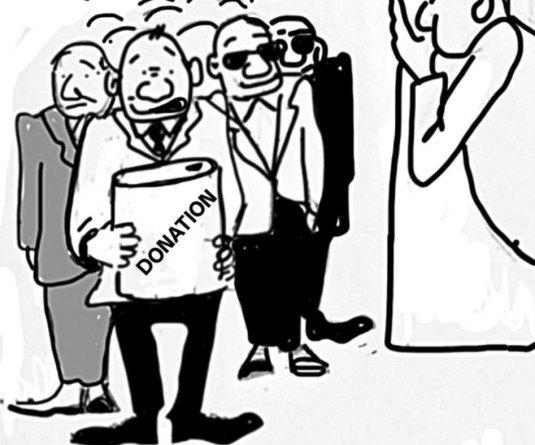A Naga elder and author Akheto Chishi and Betoka Swu sharing Indigenous knowledge during the one-day capacity building programme, which was held on June 10 at Oak House, Dimapur. The event was organised by CICES in collaboration with Henry Martyn Institute. (Morung Photo)
.jpg)
Morung Express News
Dimapur | June 10
A capacity building programme on Fading Science and sharing of Indigenous Knowledge was held here, Saturday, at Oak House. The event was organized by the Center for Indigenous Culture and Environmental Studies (CICES), a first in Nagaland, in collaboration with Henry Martyn Institute, Hyderabad (HMI). The workshop aimed to address the fading of Indigenous knowledge among the Naga community and promote its preservation and protection.
During the event, Asu Akheto Chishi, an elder and author who is also a knowledge partner with CICES, shared indigenous knowledge with the participants. Chishi narrated how the Sümi forefathers determined the number of days in a week and a month by studying the moon and its phases. They created their own calendars based on these observations. The first day of the week, known as 'Asü Kuza,' was marked by the harvest of millets, which was a staple food for the community at that time. The other six days of the week were observed with different practices, with the seventh day designated as a day of rest called 'Tughakhani,' where villagers would cleanse themselves and refrain from going out. On the eighth day, in the month of July, the premier festival called Tuluni is observed, celebrating the bountiful year for the community.
The Sümi community has followed this calendar since ancient times, and although it differs from the modern calendar, it exhibits several similarities. The counting of year begins after the festival ends on Sunday, and this is determined by observing the moon by placing a cup of water facing it towards the moon during sunset to get the reflection. Another practice was by placing a slate of mirror-like object on their brows to determine how many moons they see. They had determined the lunar eclipse by then.
These practices are considered Indigenous knowledge, and Chishi further discussed the belief in animal spirits and the connection between a certain spirit and landslides in the Sümi community. He also dwelled on Christianity and modernity being factors on the waning of Naga Indigenous knowledge.
During the programme, a short video on Dala-Dala, an agrarian song performed by the Sümis of Chishilimi village to call for rain, was shown. Mention may be made that The Morung Express covered the story in recent years.
CICES, established in 2018 by a group of friends, is a research center dedicated to preserving, protecting and promoting the rich and invaluable Naga Indigenous knowledge and practices, which are gradually disappearing from the region, said Dr Martemjen, academician and researcher who is also the founding member of CICES.
He defined Fading Science as the knowledge that Indigenous people all over the world have developed and practiced independent of Western Science. Long before ayurvedic or allopathic medicines were engineered in scientific laboratories, Nagas had their way of curing any/different ailments. The Nagas possess information and uses about species of plants, animals, birds, fishes, fungi and micro-organisms, and also recognise different kinds of flora, landforms and landscapes long before the binomial system of nomenclature was introduced in Western Science.
The researcher also said that the Naga traditional etiquettes such as 'do not waste food,' 'respect your elders,' etc have become a prerequisite in today's modern world which needs to be practiced in our everyday lives.
The concept of Fading Science was developed to highlight the urgency of safeguarding this knowledge. Around 30 participants from various professional backgrounds, including professors, teachers, doctors and advocates took part in the workshop and shared folklores and fables.






